Secure Your Data with Expert Cloud Database Solutions

What is Cloud Database Security?
Data is a critical asset for businesses. With the increasing adoption of cloud computing, securing this data has become more challenging and essential. Cloud database security protects data stored in cloud-based databases from threats, breaches, and unauthorized access. This involves implementing tools, policies, and procedures to safeguard data integrity, confidentiality, and availability.
Definition of Cloud Database Security
Cloud database security encompasses a wide range of measures designed to protect databases hosted in the cloud. This includes encryption, access control, authentication, and monitoring, among other security practices. The goal is to prevent data breaches, ensure compliance with regulations, and maintain the trust of customers and stakeholders. Cloud providers offer various security features, but it is ultimately the responsibility of organizations to implement and manage these features effectively.
Importance of Cloud Database Security
As businesses migrate their operations to the cloud, the risk of cyberattacks increases, making robust security measures imperative. Adequate cloud database security protects sensitive information from unauthorized access and potential data breaches, which can have severe financial and reputational repercussions. Moreover, it helps organizations comply with regulatory requirements, avoid legal penalties, and maintain customer trust. Ensuring data security in the cloud also promotes operational efficiency by reducing the risk of data loss and downtime.
Security Threats in Cloud Database
Risks and vulnerabilities
Cloud databases face numerous risks and vulnerabilities due to their complex and distributed nature. These risks include exposure to cyber-attacks, potential data breaches, and vulnerabilities within the cloud infrastructure itself. As more organizations migrate their data to the cloud, the attack surface expands, increasing the potential for unauthorized access and data compromise.
Common security challenges
Challenges in terms of security in cloud databases involve ensuring data integrity, maintaining data confidentiality, and managing access control. Additionally, the dynamic nature of cloud environments can make it difficult to monitor and secure data consistently. Challenges also arise from integrating various security tools and protocols across different cloud services.
Data breaches and exposure of sensitive information
Data breaches in cloud databases can expose sensitive information, including personal data, financial records, and proprietary business information. Such breaches often occur due to misconfigured security settings, weak access controls, or vulnerabilities in the cloud provider's infrastructure. The consequences of data breaches can be severe, leading to financial loss, reputational damage, and regulatory penalties.
Unauthorized access risks
Access is a significant concern for cloud databases, often stemming from inadequate access controls and authentication mechanisms. Attackers may exploit weak passwords, insufficient user permissions, or flaws in the cloud provider’s security measures to gain unauthorized access to sensitive data. Ensuring robust access control policies and regularly reviewing user permissions are critical to mitigating these risks.
Insecure APIs and interfaces
They present significant security threats to cloud databases. APIs, essential for interacting with cloud services, can be vulnerable to attacks, such as injection attacks and man-in-the-middle attacks, if not properly secured. Insecure interfaces can also expose cloud databases to unauthorized access and data manipulation. Strong authentication, encryption, and monitoring practices are essential to secure APIs and interfaces in cloud environments.
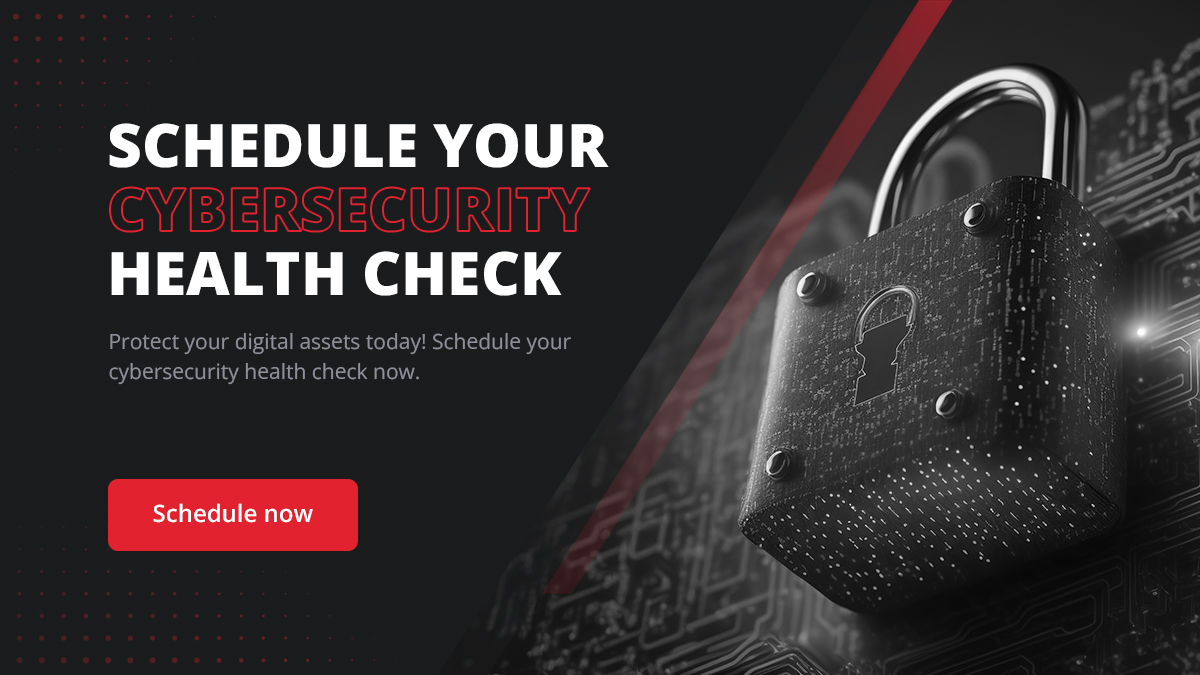
Security Threats in Cloud Database
Insufficient encryption or encryption management
Cloud databases often face security threats due to insufficient encryption or poor encryption management practices. Without robust encryption, sensitive data is vulnerable to unauthorized access and interception. Effective encryption management involves encrypting data at rest and in transit, securely handling encryption keys, and regularly updating encryption protocols to counter evolving threats.
Misconfigurations and inadequate security settings
These issues can arise from default settings that are not sufficiently secure, incorrect configuration of security groups, or failure to implement best practices. Since misconfigurations and inadequate security settings are common vulnerabilities in cloud databases. Such misconfigurations can create exploitable weaknesses, allowing attackers to bypass defenses and access sensitive data.
Compliance with various regulatory requirements
Ensuring compliance with various regulatory requirements is a significant challenge for cloud databases. Different industries and regions have specific regulations governing data protection, privacy, and security, such as GDPR, HIPAA, and CCPA. Non-compliance can result in legal penalties, financial losses, and damage to an organization’s reputation. Organizations must continuously monitor and adapt their cloud security practices to meet these regulatory standards.
Advanced persistent threats and cyber-attacks
Cloud databases are increasingly targeted by advanced persistent threats (APTs) and sophisticated cyber-attacks. APTs involve prolonged and targeted attacks aimed at stealing data or disrupting services. These threats often exploit vulnerabilities within the cloud infrastructure, including software vulnerabilities, insecure interfaces, and weak access controls. Protecting against APTs requires comprehensive security measures, including threat detection, incident response, and regular security assessments.
Insider threats and employee errors
These threats and errors pose a significant risk to cloud database security. Insiders with access to sensitive data may intentionally or unintentionally compromise security through data theft, sabotage, or accidental data exposure. Effective measures to mitigate these threats include implementing strict access controls, conducting regular security training, and monitoring user activity to detect and respond to suspicious behavior.
Physical Security in Cloud Database
Physical security is critical to cloud database security. It ensures that the physical infrastructure housing the databases is protected from unauthorized access, damage, or interference.
Importance of Physical Security
While digital security measures protect data from cyber threats, physical security safeguards the hardware and infrastructure on which the cloud databases run. With robust physical security, all other security measures can be protected, as physical access to servers and storage devices can lead to data theft, tampering, or destruction. Ensuring the physical security of data centers helps maintain the integrity, confidentiality, and availability of cloud databases, which are essential for maintaining customer trust and complying with regulatory requirements.
Measures to Ensure Physical Security
Organizations and cloud service providers implement various measures to ensure physical security for cloud databases. These measures include strict access controls, which limit entry to data centers to authorized personnel only. Data centers often have secure entry points, such as mantraps and security gates, to prevent unauthorized access. Additionally, robust perimeter security measures, such as fencing and security guards, are employed to protect against external threats. Environmental controls, including fire suppression systems, climate control, and uninterruptible power supplies, are crucial to prevent damage from natural disasters or equipment failures.
Biometric Access Controls
They are a vital component of physical security for cloud databases, offering a high level of protection by verifying individuals' identities based on unique biological characteristics. These systems may include fingerprint scanners, facial recognition, or iris scanners, ensuring that only authorized personnel can access sensitive areas of the data center. Biometric access controls reduce the risk of unauthorized entry by making it difficult for intruders to bypass security measures, thus enhancing the overall security posture of the data center.

Surveillance Cameras
They provide continuous monitoring of data center facilities, deterring unauthorized access and promptly detecting suspicious activities. High-definition cameras with night vision capabilities are strategically placed throughout data centers, including entry and exit points, server rooms, and common areas. The footage from these cameras is often monitored in real-time by security personnel and recorded for future reference, aiding in the investigation of security incidents and ensuring compliance with security policies. By integrating surveillance cameras with other security systems, organizations can create a comprehensive security strategy that protects their cloud infrastructure from physical threats.
Security Personnel
These trained professionals are responsible for monitoring access to data centers, conducting regular patrols, and responding to security incidents. Their presence acts as a deterrent to potential intruders and ensures that only authorized individuals gain access to critical areas. Security personnel are often equipped with communication devices and are trained to handle various security scenarios, including unauthorized entry attempts, emergencies, and suspicious activities. Their role is crucial in enforcing security protocols, managing access control systems, and ensuring the overall safety and security of the data center environment.
Controlled Access to Data Centers
This involves implementing strict access control measures to ensure that only authorized personnel can enter sensitive areas. Access is typically managed through a combination of key cards, biometric systems, and PIN codes, which are integrated into a centralized access control system. These systems log entry and exit times, providing an audit trail that can be reviewed for security compliance and incident investigation. Additionally, controlled access may involve multi-layered security zones, where different levels of access are granted based on the individual’s role and security clearance, further enhancing the protection of critical infrastructure.
Secure Enclosures for Hardware
These enclosures, often in the form of locked cabinets or cages, provide an additional layer of security by restricting access to servers, storage devices, and networking equipment. They are designed to prevent unauthorized tampering, theft, or damage to hardware. Secure enclosures are typically made of robust materials and equipped with locks that require special keys or biometric verification to open. This ensures that only authorized personnel can access the hardware, maintaining the integrity and security of the data stored within the cloud infrastructure. Additionally, these enclosures often include environmental controls to protect hardware from physical threats such as fire, flooding, or extreme temperatures.
Why is Cloud Database Security Important?
Cloud database security is critical for modern businesses due to its role in safeguarding sensitive data, ensuring compliance with regulations, mitigating risks, and maintaining business continuity.
Data Protection
It is the primary reason for prioritizing cloud database security. In an era where big data breaches are increasingly common, securing sensitive information such as personal data, financial records, and intellectual property is essential. Effective cloud database security measures, including encryption, access controls, and regular security audits, help prevent unauthorized access and data leaks. Protecting data maintains the privacy and integrity of information, builds customer trust, and upholds the organization's reputation.
Compliance
Regulations and compliance such as the General Data Protection Regulation (GDPR), the Health Insurance Portability and Accountability Act (HIPAA), and the California Consumer Privacy Act (CCPA) impose strict guidelines on how data must be stored, processed, and protected. Cloud database security ensures that organizations meet these regulatory standards, avoiding legal penalties and maintaining the trust of stakeholders. Compliance also involves implementing data retention policies, conducting regular audits, and ensuring transparency in data handling practices.
Risk Mitigation
It is a significant benefit of robust cloud database security. By implementing comprehensive security measures, organizations can reduce the likelihood and impact of various threats, including cyberattacks, data breaches, and insider threats. Security practices such as multi-factor authentication, regular software updates, and continuous monitoring help identify and address vulnerabilities before they can be exploited. Effective risk mitigation strategies also involve developing incident response plans and conducting regular security assessments to ensure ongoing protection against emerging threats.
Business Continuity
Businesses are heavily dependent on the security of cloud databases. Security breaches or data loss can disrupt business operations, leading to downtime, financial loss, and damage to the organization’s reputation. By ensuring the security of cloud databases, organizations can maintain the availability and reliability of their data and services, even in the face of security incidents. Data backups, disaster recovery plans, and redundancy systems are integral to maintaining business continuity, enabling organizations to quickly recover from disruptions and continue their operations with minimal impact. This resilience is crucial for sustaining long-term business success and stability.
Reputation Management
A robust security posture helps prevent data breaches and cyberattacks, which can severely damage an organization's reputation. Customers and partners are more likely to trust businesses that firmly commit to data security. A breach can lead to negative publicity, loss of customer confidence, and a long-term impact on brand image. By maintaining high-security standards, organizations can protect their reputation, foster trust, and enhance their market standing.

Cost Management
Effective cloud database security is crucial for managing costs associated with data breaches and compliance failures. Data breaches can result in substantial financial losses due to fines, legal fees, and compensation claims. Additionally, the cost of remediation efforts, such as investigating breaches, restoring data, and implementing additional security measures, can be significant. By investing in robust security measures, organizations can avoid these expenses and reduce the financial impact of potential security incidents. Proactively managing security also helps minimize operational disruptions, leading to cost savings and improved financial stability.
Competitive Advantage
Cloud database security can provide a competitive advantage by differentiating a business in a crowded marketplace. Organizations that prioritize and effectively manage data security can market themselves as trusted and reliable partners, attracting customers increasingly concerned about data privacy and security. Strong security practices can enhance customer loyalty, attract new clients, and open up opportunities in industries where data security is critical. Additionally, demonstrating a commitment to security can be a key differentiator in contract negotiations and business partnerships, giving organizations a competitive edge over less secure competitors
How to Implement a Cloud Security Policy
Implementing a cloud security policy involves a structured approach to ensure comprehensive protection of data and systems in cloud environments. This process includes conducting a thorough risk assessment, defining clear security objectives and requirements, and developing a well-documented security policy.
Conduct a Thorough Risk Assessment
This involves identifying potential threats and vulnerabilities within the cloud environment, evaluating the likelihood and impact of various risks, and determining the organization’s risk tolerance. The assessment should cover all aspects of the cloud infrastructure, including data storage, network configurations, and access controls. Organizations can prioritize security measures and allocate resources effectively to address the most critical threats by understanding the specific risks associated with the cloud setup. This process also involves assessing the security posture of third-party vendors and ensuring that they comply with the organization’s security standards.
Define Security Objectives and Requirements
This step involves setting specific, measurable goals for the security policy's goals, such as protecting sensitive data, ensuring regulatory compliance, and maintaining system integrity and availability. Security requirements should be aligned with the organization’s overall business objectives and risk tolerance. This includes specifying technical controls, such as encryption and authentication mechanisms, and administrative controls, like access management policies and incident response procedures. By clearly defining these objectives and requirements, organizations can create a focused and effective security policy that addresses their unique needs and challenges.
Develop and Document the Security Policy
This involves creating a comprehensive document that outlines the security measures, protocols, and procedures to be followed within the cloud environment. The policy should detail the roles and responsibilities of all stakeholders, including IT staff, management, and end-users, ensuring that everyone understands their part in maintaining cloud security. It should also include guidelines for monitoring and reporting security incidents, conducting regular security audits, and updating the policy to address new threats and changes in the cloud infrastructure. Clear documentation ensures that the security policy is accessible, understandable, and actionable, providing a solid foundation for ongoing security management and compliance efforts. Regular training and awareness programs should ensure that all personnel are familiar with the policy and their respective responsibilities.
Define Roles and Responsibilities
This step clearly outlines who is responsible for various aspects of cloud security within the organization. Key roles typically include security officers, IT administrators, compliance officers, and end-users. Each role should have specific responsibilities, such as managing access controls, overseeing data encryption, conducting security audits, and responding to security incidents. By clearly defining these roles, organizations can ensure accountability and streamline the execution of security measures. This clarity helps prevent overlaps or gaps in security coverage, thus enhancing the overall effectiveness of the security policy.

Educate and Train Employees on the Policy
This is essential to ensure the successful implementation of cloud database security. This involves developing comprehensive training programs that cover the policy’s key aspects, including security protocols, best practices, and incident response procedures. Training should be tailored to employees' specific roles and responsibilities, ensuring that each individual understands their part in maintaining cloud security. Regular workshops, seminars, and online courses can help keep employees updated on the latest security threats and policy updates. Continuous education fosters a security-conscious culture within the organization, empowering employees to effectively recognize and respond to potential security threats.
Monitor and Audit Compliance Regularly
This involves implementing tools and processes to track security policy adherence and detect deviations or violations continuously. Regular audits should be conducted to assess the effectiveness of security controls, identify potential weaknesses, and ensure compliance with regulatory requirements. These audits can be performed internally or by third-party experts to objectively evaluate the organization’s security posture. Security monitoring should include real-time alerts for suspicious activities, regular security logs, and review of access records. By consistently auditing and monitoring compliance, organizations can proactively address security issues, adapt to evolving threats, and ensure that their cloud security policy remains robust and effective.
Technologies that Strengthen Cloud Database Security
Implementing advanced technologies is essential for enhancing cloud database security. These technologies provide multiple layers of defense, ensuring comprehensive protection against various threats and vulnerabilities.
Encryption Technologies
Encryption is fundamental to securing data in cloud databases. They transform readable data into an unreadable format using algorithms, ensuring only authorized parties with the correct decryption keys can access the information. Encryption can be applied to data at rest, in transit, and even in use. Common encryption methods include symmetric encryption, where the same key is used for encryption and decryption, and asymmetric encryption, which uses a pair of public and private keys. Implementing robust encryption technologies helps protect sensitive data from unauthorized access and breaches, even if the data is intercepted or accessed by malicious actors.
Multi-Factor Authentication (MFA)
MFA is a security technology that requires users to provide two or more verification factors to access a cloud database. This typically involves something the user knows (a password), something the user has (a security token or smartphone), and something the user is (biometric verification like a fingerprint or facial recognition). MFA significantly enhances security by adding an additional layer of protection beyond just a username and password. This makes it much harder for attackers to gain unauthorized access, even if they have compromised one of the authentication factors. Implementing MFA helps reduce the risk of account takeovers and unauthorized data access.
Intrusion Detection Systems (IDS) and Intrusion Prevention Systems (IPS)
IDS monitors network traffic and system activities for suspicious behavior, generating alerts when potential threats are detected. It helps identify security breaches, policy violations, and other anomalous activities. On the other hand, IPS not only detects but also takes proactive measures to prevent detected threats by blocking malicious traffic and enforcing security policies. By deploying IDS and IPS, organizations can enhance their ability to detect, respond to, and prevent security incidents, thereby strengthening the overall security posture of their cloud database environments. These systems are essential for maintaining continuous security monitoring and protecting against a wide range of cyber threats
Security Information and Event Management (SIEM) Systems
SIEM systems collect and analyze data from various sources across the network to provide real-time insights into potential security threats. They consolidate log data, event information, and security alerts into a centralized platform, enabling security teams to detect, analyze, and respond to incidents more effectively. By correlating events and identifying patterns indicative of suspicious activity, SIEM systems help in early threat detection and improve incident response times. Additionally, they provide comprehensive reporting and compliance management capabilities, which are crucial for meeting regulatory requirements and maintaining a robust security posture.
Firewall Technologies
Firewalls monitor and control incoming and outgoing network traffic based on predetermined security rules. They can be implemented as hardware, software, or a combination of both and are essential for preventing unauthorized access to cloud databases. Firewall technologies are a fundamental component of cloud database security, acting as a barrier between the secure internal network and potentially harmful external traffic. Modern firewalls, such as Next-Generation Firewalls (NGFWs), offer advanced features like deep packet inspection, intrusion prevention, and application-level filtering. These capabilities enable more granular control over network traffic and enhance the ability to detect and block sophisticated threats. By integrating firewall technologies into the cloud security architecture, organizations can significantly reduce the risk of cyberattacks and protect their cloud databases from external threats.
Best Practices to Enhance Cloud Database Security
Enhancing cloud database security involves adopting best practices that address various aspects of data protection, access control, and threat detection. Implementing these practices helps ensure robust security and compliance with regulatory standards.
Use Strong Access Controls and Authentication Methods
Robust access controls and authentication methods are essential for securing cloud databases. This includes implementing role-based access control (RBAC) to ensure that users have only the necessary permissions required for their roles, following the principle of least privilege. Strong password policies should be enforced, requiring complex and unique passwords that are regularly updated. Additionally, integrating single sign-on (SSO) solutions can simplify access management while enhancing security. Access control measures should be regularly reviewed and updated to adapt to changes in the organization’s structure and to ensure that only authorized individuals can access sensitive data.
Encrypt Data in Transit and at Rest
Data in transit should be encrypted using protocols such as TLS (Transport Layer Security) to protect it from interception and tampering as it moves between clients and servers. For data at rest, robust encryption algorithms such as AES (Advanced Encryption Standard) should be used to ensure that data remains secure even if physical storage devices are compromised. Effective encryption key management practices are also essential, including regular key rotation and secure storage of encryption keys, to prevent unauthorized access to encrypted data.
Use Multi-Factor Authentication (MFA)
Implementing multi-factor authentication adds an extra layer of security to the authentication process, making it significantly more difficult for unauthorized users to gain access to cloud databases. MFA requires users to provide two or more verification factors, which may include something they know (password), something they have (security token or mobile device), and something they are (biometric verification). By requiring multiple forms of verification, MFA reduces the risk of compromised credentials leading to unauthorized access. Organizations should integrate MFA into all access points to cloud databases, especially for administrative and sensitive data access.

Implement Comprehensive Logging and Monitoring
Comprehensive logging and monitoring are crucial for detecting and responding to security incidents in cloud databases. This involves capturing detailed logs of all database activities, including access attempts, data modifications, and administrative actions. These logs should be continuously monitored and analyzed using automated tools to identify unusual patterns or suspicious behavior indicative of potential security threats. Implementing Security Information and Event Management (SIEM) systems can enhance this process by providing centralized log management, real-time analysis, and correlation of events across the network. Regularly reviewing and auditing logs helps maintain security compliance, identify vulnerabilities, and improve the organization’s security posture.
Regularly Update and Patch Systems
This practice involves consistently applying the latest software updates and patches to address vulnerabilities and fix security flaws. Cloud service providers frequently release updates to enhance security and functionality, and organizations must implement these updates promptly to protect against potential exploits. Establishing an automated patch management system can streamline this process, ensuring that all components of the cloud infrastructure are up-to-date without manual intervention. Regular updates not only enhance security but also improve system performance and reliability.
Apply the Principle of Least Privilege (PoLP)
This fundamental security practice restricts user access to the minimum necessary to perform their job functions. This approach minimizes the risk of unauthorized access and potential data breaches by limiting the permissions granted to users and applications. Implementing PoLP involves carefully defining user roles and permissions, regularly reviewing access rights, and adjusting them as needed based on changes in job responsibilities or project requirements. By enforcing PoLP, organizations can reduce the attack surface and mitigate the impact of compromised accounts or insider threats.
Develop and Enforce a Comprehensive Data Security Policy
This policy should outline the security measures, protocols, and procedures required to safeguard data, including access controls, encryption standards, incident response plans, and compliance requirements. It should also define the roles and responsibilities of employees and stakeholders in maintaining data security. Regular training and awareness programs should be conducted to ensure that all personnel understand and adhere to the policy. A well-documented and enforced data security policy helps establish a consistent security framework, promotes a culture of security awareness, and ensures compliance with legal and regulatory standards.
Conduct Regular Security Audits and Assessments
Regular audits involve a thorough review of the security controls, configurations, and policies to ensure they are effective and up-to-date. Security assessments, including vulnerability scans and penetration testing, help identify potential weaknesses and simulate attack scenarios to evaluate the resilience of the cloud infrastructure. Organizations should schedule these audits and assessments periodically and after significant changes to the cloud environment. The findings from these evaluations should be used to enhance security measures, update policies, and improve overall security posture. Regular audits and assessments ensure continuous monitoring, compliance, and proactive risk management in cloud database security
RedZone Technologies Can Help with Cloud Database Security
RedZone Technologies adopts a proactive and client-centered approach to managed IT services, providing robust cloud database security solutions tailored to small and medium businesses (SMBs). Focusing on comprehensive protection, compliance, and efficiency, we offer various services and solutions to enhance your cloud security posture.
Our Approach to Cloud Security for Small and Medium Businesses
RedZone Technologies adopts a holistic approach to cloud security, specifically designed to address the unique challenges faced by small and medium businesses. We understand that SMBs often have limited resources and expertise, so implementing cost-effective and scalable security solutions is essential. Our approach begins with a thorough assessment of your security posture, identifying potential vulnerabilities and areas for improvement. We then develop a customized security strategy that includes robust access controls, encryption, multi-factor authentication, and continuous monitoring. We aim to provide SMBs with the tools and knowledge needed to secure their cloud databases effectively while ensuring compliance with industry regulations.
Key Partnerships
We have established Key Partnerships with leading cloud service providers and security vendors to deliver top-tier security solutions. Our collaborations with industry giants such as AWS, Microsoft Azure, and Google Cloud enable us to offer integrated security services optimized for various cloud environments. Additionally, we partner with renowned security technology providers to incorporate advanced tools like Security Information and Event Management (SIEM) systems, Next-Generation Firewalls (NGFWs), and intrusion detection and prevention systems (IDPS) into our service offerings. These partnerships enhance our ability to provide comprehensive, cutting-edge security solutions that are both reliable and effective.
Featured Solutions/Related Services
RedZone Technologies offers a featured suite of IT solutions and related services designed to enhance cloud database security for SMBs. Our featured solutions include:
- Cloud Security Assessments: Comprehensive evaluations of your cloud environment to identify vulnerabilities including next-generation firewalls and recommend security enhancements.
- Managed Security Services: Ongoing management and monitoring of your cloud security infrastructure, including incident response and threat management.
- Virtual Security Operations: Our Virtual Security Operations offers expertly managed security services that monitor and protect your digital environment around the clock.
- Access Management Solutions: Deployment of advanced access controls and multi-factor authentication to safeguard against unauthorized access.
- Compliance Management: Assistance with meeting industry-specific regulatory requirements, including GDPR, HIPAA, and CCPA, through tailored security strategies and documentation.
By combining our expertise, strategic partnerships, and comprehensive service offerings, RedZone Technologies is well-equipped to help small and medium businesses achieve robust cloud database security, ensuring their data is protected against evolving threats and compliant with regulatory standard

Conclusion
Cloud database security is essential to modern business operations, primarily as organizations increasingly rely on cloud services to store and manage critical data. Ensuring robust security measures helps protect sensitive information, maintain compliance with regulatory standards, and safeguard against cyber threats. Businesses can significantly enhance their cloud database security posture by implementing best practices such as strong access controls, data encryption, multi-factor authentication, and comprehensive logging and monitoring.
RedZone Technologies is committed to assisting small and medium businesses in navigating the complexities of cloud database security. Through our tailored approach, strategic partnerships, and a suite of advanced security solutions, we provide the expertise and tools needed to secure cloud environments effectively. Contact us today for enhanced operational efficiency, improved cybersecurity, scalable IT infrastructure, and access to continuous support and expert advice. Our focus on thorough risk assessments, clear security objectives, and continuous monitoring ensures that our clients can confidently leverage cloud technologies while maintaining the highest data security and compliance levels.
In conclusion, prioritizing cloud database security is crucial for protecting valuable data, sustaining business continuity, managing costs, and gaining a competitive advantage. With the support of experienced partners like RedZone Technologies, businesses can achieve a secure and resilient cloud infrastructure, ready to meet the challenges of today’s dynamic digital landscape
FAQs
What Compliance Standards Apply to Cloud Database Security?
Cloud database security is governed by various compliance standards designed to protect sensitive information and ensure data privacy. Key standards include the General Data Protection Regulation (GDPR), which mandates stringent data protection measures for organizations handling the personal data of EU citizens. The Health Insurance Portability and Accountability Act (HIPAA) sets requirements for protecting health information in the United States, emphasizing data confidentiality, integrity, and availability. The California Consumer Privacy Act (CCPA) focuses on enhancing privacy rights and consumer protection for residents of California. Additionally, the Payment Card Industry Data Security Standard (PCI DSS) applies to organizations that handle credit card information, requiring robust security controls to safeguard cardholder data. Organizations must assess their specific regulatory obligations and implement corresponding security measures to ensure compliance and avoid legal penalties.
How Can Organizations Effectively Respond to a Cloud Database Security Breach?
Effectively responding to a cloud database security breach involves a series of coordinated actions to mitigate damage, restore security, and prevent future incidents. Initially, organizations should activate their incident response plan, which outlines the steps to be taken during a security breach. This includes identifying and isolating affected systems to prevent further unauthorized access or data loss. Comprehensive logging and monitoring tools should be utilized to analyze the breach, identify its cause, and understand the scope of the impact. Communication is critical during this phase; organizations must notify relevant stakeholders, including affected customers, regulatory bodies, and internal teams, in accordance with legal and regulatory requirements.
Subsequently, organizations should focus on remediation efforts, such as patching vulnerabilities, updating security controls, and enhancing monitoring systems to detect similar threats in the future. Conducting a thorough post-incident review is essential to evaluate the effectiveness of the response and to identify lessons learned. This review should inform updates to the incident response plan, security policies, and training programs to strengthen overall security resilience. Regular drills and simulations of security incidents can also help prepare the organization for future breaches, ensuring a swift and effective response to protect data integrity and maintain business continuity
How Does the Shared Responsibility Model Work in Cloud Database Security?
The shared responsibility model in cloud database security is a framework that delineates the roles and responsibilities of both the cloud service provider (CSP) and the client to ensure comprehensive protection of data in the cloud. This model recognizes that securing cloud environments is a joint effort between the CSP and the client, where each party is responsible for different aspects of security.
The cloud service provider is typically responsible for securing the infrastructure that runs all of the services offered in the cloud. This includes the hardware, software, networking, and facilities that host the cloud services. The CSP ensures the security of the operating systems, virtualization layer, and the physical servers and data centers.
On the other hand, the client (or cloud user) is responsible for managing the security of the data they put into the cloud. This includes controlling who has access to their data, managing the encryption of their data, ensuring secure internet connections, and maintaining compliant data handling practices. The client is also responsible for configuring and managing any additional security measures that are not covered by the cloud provider, such as identity and access management, endpoint security, and data classification.
Understanding this shared responsibility model is crucial for organizations to ensure that all aspects of security are covered and that there are no gaps in protection due to misunderstandings about who is responsible for what.
What are the most effective ways to train employees in Cloud Database security?
Training employees on cloud database security is critical for preventing data breaches and ensuring that security measures are effectively implemented. The most effective ways to train employees include:
- Regular Training Sessions: Conduct regular training sessions to keep employees updated on the latest security threats and practices. These sessions can be held as formal classroom training, webinars, or online courses that cover key security topics such as password management, recognizing phishing attempts, and safe internet practices.
- Hands-On Workshops: Implement hands-on workshops where employees can practice security procedures in a controlled environment. This might include simulations of security breaches, using security software tools, and role-playing exercises to handle different security scenarios.
- E-Learning Modules: Develop interactive e-learning modules that employees can complete at their own pace. These modules can include quizzes, interactive scenarios, and certifications to engage employees and test their knowledge.
- Security Awareness Campaigns: Run regular security awareness campaigns that highlight topics relevant to cloud database security. These campaigns can use posters, emails, and team meetings to spread important security messages and tips.
- Gamification: Incorporate gamification into training programs to make learning about cloud database security more engaging. This could involve leaderboards, rewards, and badges for employees who demonstrate strong security practices or achieve high scores in security quizzes.
- Continuous Feedback and Improvement: Gather feedback from employees about the training programs and use this information to improve future training sessions. Continuous improvement of the training content and delivery methods is key to maintaining high levels of engagement and effectiveness.
By integrating these training methods, organizations can create a robust security culture where employees are well-informed and proactive about protecting the organization’s data in the cloud.
 Security Updates
Security UpdatesUnderstanding IT Compliance: Scope, Benefits, and Challenges
Discover what IT compliance is, its importance, benefits, risks of non-compliance, frameworks, and how to achieve robust IT compliance in your organization.
 Security Updates
Security UpdatesImplement Secure Browsing with Powerful SSL Decryption
Explore the essentials of SSL decryption, its importance, challenges, and best practices for enhancing security and compliance for business in a detailed guide
 Security Updates
Security UpdatesTransitioning from Proxy Firewalls to Endpoint Security
Explore the evolution from proxy firewalls to endpoint security, enhanced threat detection, data encryption, and comprehensive protection for modern networks.
 Security Updates
Security UpdatesExpert IT Risk Assessment: Protect Your Business Today!
Mitigate potential IT threats with our comprehensive risk assessment guide, ensuring your digital infrastructure. Ensure your business is secure an...
 Security Updates
Security UpdatesEssential Guide to Best Practices in Compliance Security
Explore essential strategies for compliance security in this comprehensive guide. Learn about safeguarding your business and meeting regulatory sta...
 Security Updates
Security UpdatesSecure Your Data with Expert Cloud Database Solutions
Learn efficient solutions and secure your cloud databases with encryption and compliance features, ensuring data safety and privacy across all plat...
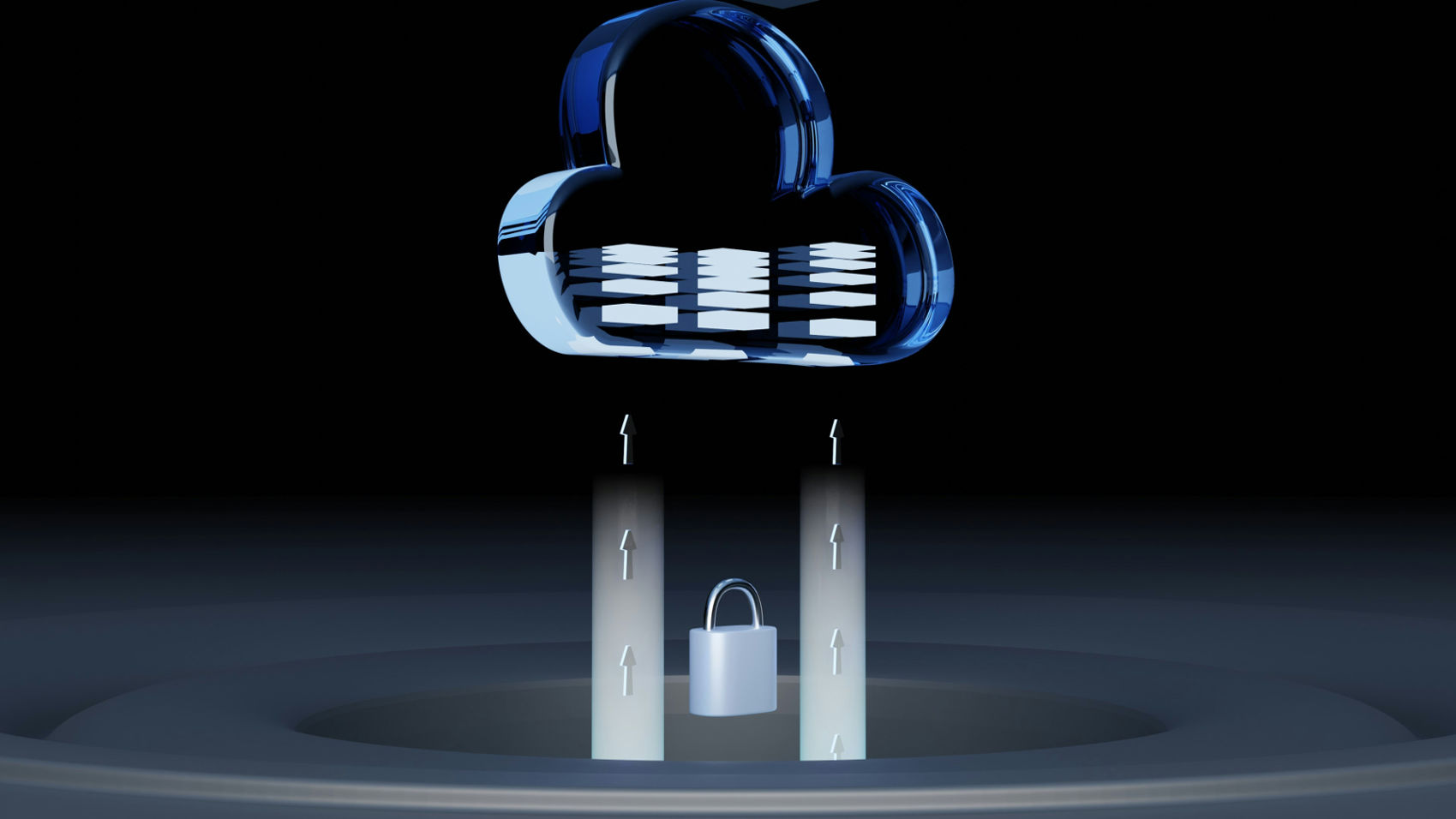 Security Updates
Security UpdatesA Guide to Cloud Network Technology: Benefits and Types
Unlock the potential of cloud network technology for seamless connectivity. Learn and scale solutions that drive business innovation and growth via...
 Security Updates
Security UpdatesAffordable Managed IT Services for Small Businesses
Explore top-managed IT services for small businesses to boost efficiency and security. Get expert insights and practical tips to optimize your IT o...
 Security Updates
Security UpdatesSecure Your Network with Gateway Security Solutions
Explore the essentials of gateway security: learn about its importance for network protection and best practices to safeguard your digital assets e...
 Security Updates
Security UpdatesDisaster Recovery Testing: Ensure Business Continuity
Explore effective disaster recovery testing strategies in this guide to maintain business continuity, prevent data loss, and minimize downtime duri...
 Security Updates
Security UpdatesMaximizing Security: Vulnerability Management Lifecycle
Explore the complete guide to the Vulnerability Management Lifecycle to boost your cyber resilience and secure your business IT infrastructure effe...
 Security Updates
Security UpdatesYour Network with Endpoint Security Management
Explore our comprehensive guide on Endpoint Security Management to understand its importance, how it works, and best practices for robust network s...
 Security Updates
Security UpdatesEnsuring Security Compliance: Tips, Insights & Strategies
Discover the essentials of security compliance, its importance, frameworks, and tools. Learn how to protect data and meet regulatory standards effe...
 Security Updates
Security UpdatesBoost Your Security with Internal Penetration Testing
Dive into internal penetration testing with our in-depth guide. Learn the essentials, techniques, and best practices to fortify your cybersecurity ...
 Security Updates
Security UpdatesEgress vs Ingress: A Guide to Data Traffic Management
Understand Egress vs Ingress in data management. Learn and explore their roles, traffic analysis, risks, and best practices for network and cloud s...
 Security Updates
Security UpdatesPrevent Credential Harvesting to Protect Your Precious Data
Understand credential harvesting. Learn how it works, common techniques, its impact, and strategies to prevent and mitigate attacks to secure your ...
 Security Updates
Security UpdatesSecure Your Big Data: Top Solutions for Data Security
Protect your valuable data with our robust big data security solutions. Learn about the threats and Safeguard against cyber threats and ensure comp...
 Security Updates
Security UpdatesSecure Your Network with Advanced Management Solutions
Explore the details of comprehensive network security management: Learn key strategies, best practices, and tools to safeguard your digital environ...
 Security Updates
Security UpdatesGuide to On-Path Attacks: Protecting Your Cybersecurity
Learn about on-path attacks in this comprehensive guide, exploring definitions, types, consequences, and key prevention strategies to safeguard you...
 Security Updates
Security UpdatesExploring Managed Cloud Services: A Comprehensive Guide
Dive into the Managed Cloud Services with our in-depth guide. Explore benefits, types, and best practices to enhance your business's cloud strategy...
 Security Updates
Security UpdatesComprehensive Guide to Ubiquitous Computing: Impact & Future
Explore the details of ubiquitous computing, from its core concepts and layers to its societal impact, key technologies, applications, and future p...
 Security Updates
Security UpdatesClone Phishing Explained: Detection and Prevention Guide
Discover how clone phishing works and its impact. Learn effective strategies to identify, prevent, and respond to these sophisticated email threats...
 Security Updates
Security UpdatesHow to Secure Your Business with Cyber Security Insurance
Explore the essentials of Cyber Security Insurance, covering its importance, types of coverage, benefits, and considerations for businesses in the ...
 Security Updates
Security UpdatesEfficient Data Spooling Solutions For Streamlined Operation
Learn How To Efficiently Manage And Store Your Data With Our Reliable Data Spooling Services. Keep Your Information Organized And Accessible With T...
 Security Updates
Security UpdatesMaximizing Compliance & Risk Management: Expert Strategies
Learn how to ensure business success with effective compliance and risk management strategies. Explore definitions, differences, frameworks, and ch...
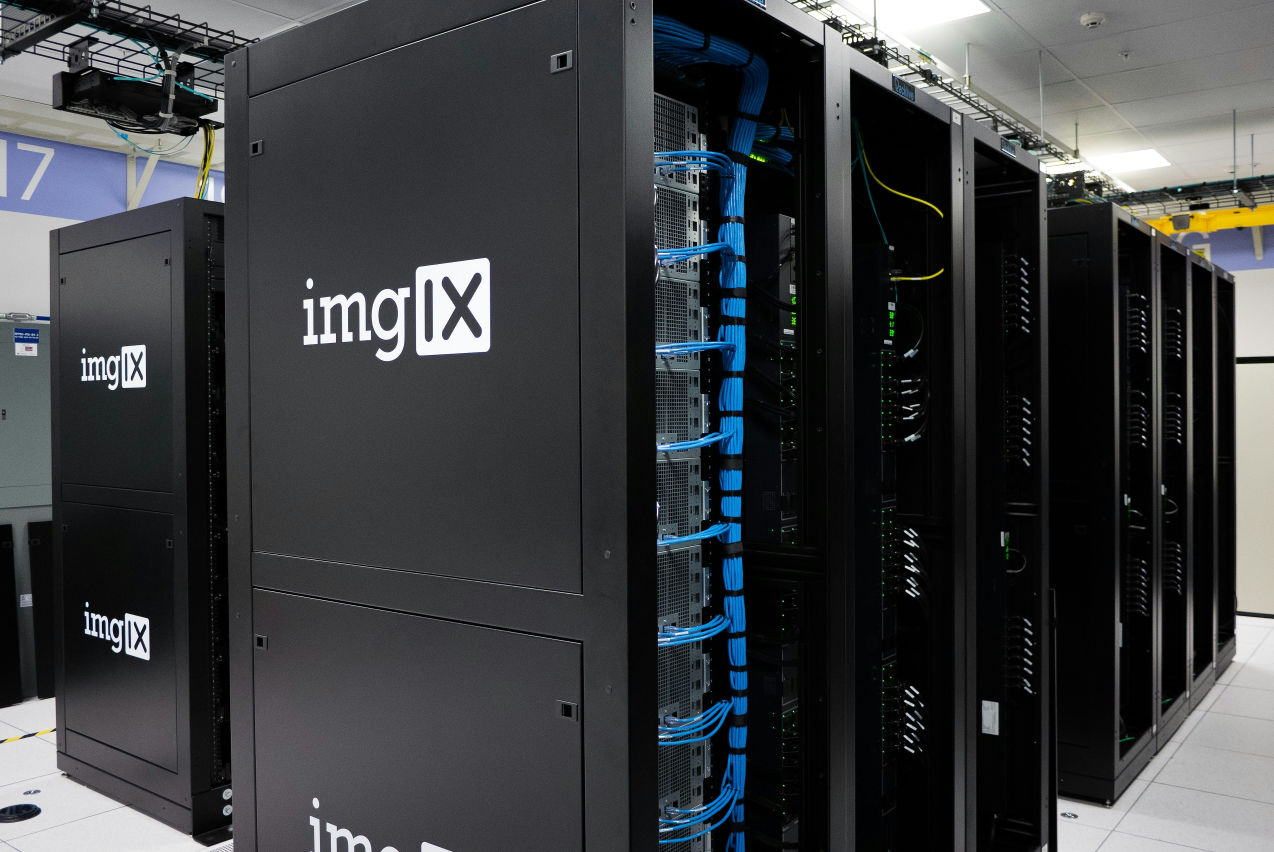 Security Updates
Security UpdatesUnderstanding MDF vs IDF: Key Differences & Benefits
Explore the crucial differences and examples between MDF and IDF in networking, understanding their roles, functions, and impact on network infrast...
 Security Updates
Security UpdatesRedZone Wins CRN's Top Security 100 & MSP 500 Awards 2024
RedZone Technologies earns CRN's Security 100 & MSP 500 Awards, affirming its leadership and innovative approach in the cybersecurity and IT manage...
 Security Updates
Security UpdatesJames Crifasi Speaks on Cybersecurity at Tech Conference
Join James Crifasi, CTO & COO of RedZone Technologies, at the Tech Conference as he explores cybersecurity's role in driving business growth and ad...
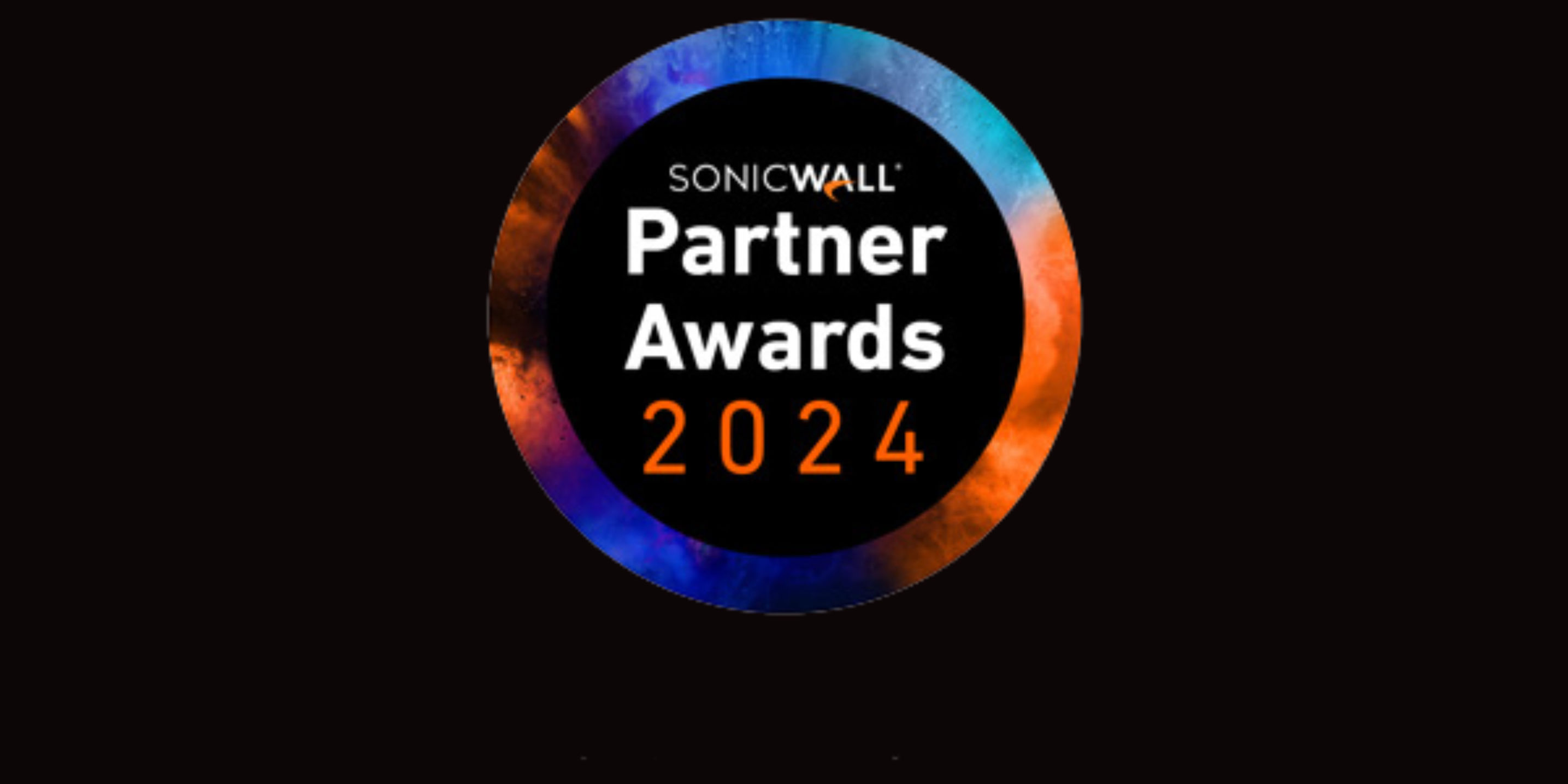 Security Updates
Security UpdatesRedZone's James Crifasi Wins SonicWall's Technical Hero Award
CTO James Crifasi of RedZone Technologies earns SonicWall's Technical Hero of the Year, exemplifying unparalleled dedication to cybersecurity and I...
 Security Updates
Security UpdatesHow to Encrypt Email in Outlook
Learn how to encrypt email in Outlook with our step-by-step guide. Secure your messages using S/MIME, Office 365 Encryption OME, and add-ins for pr...
 Security Updates
Security UpdatesWhat Is Security Monitoring? Importance and Tools
Explore the importance of security monitoring, its key roles, types, and how it protects organizations against threats, ensuring compliance and pro...
 Security Updates
Security UpdatesServer 2012 R2 End of Life: Implications and Next Steps
Learn about Server 2012 R2 end of life: Understand its impact, key dates, risks post-EOL, and explore upgrade options and migration strategies for ...
 Security Updates
Security UpdatesProtect Personal Data: Smishing and Phishing Prevention
Know how to identify and protect against smishing and phishing attacks. Learn the techniques, types, and preventive measures for personal and busin...
 Security Updates
Security UpdatesSmurf Attack Guide: Prevention & Detection Strategies
Explore prevention & recovery from Smurf Attacks: Understand DDoS defense, detection signs, and secure network practices in our detailed cybersecur...
 Security Updates
Security UpdatesWhat is a Bad USB Attack, and How Do You Prevent It?
Learn about Bad USB attacks, their various forms, and strategies for safeguarding devices. Learn how to mitigate risks with effective prevention te...
 Security Updates
Security UpdatesKey Differences Between DOS Attack vs DDOS Attack
Explore the key differences between DDoS vs DoS attacks, their types, impacts, and prevention strategies in our comprehensive guide to enhance cybe...
 Security Updates
Security UpdatesUnderstanding the Impact of a Ping of Death Attack
Explore the ins and outs of Ping of Death attacks. Understand how they work, their impact on networks, and strategies to prevent them to keep your ...
 Security Updates
Security UpdatesThe Power of the Human Firewall: Your First Line of Defense
Discover the critical role of the human firewall in cybersecurity, combining employee vigilance with technology to protect against cyber threats ef...
 Security Updates
Security UpdatesStateful Firewall vs. Stateless Firewalls: What's the Difference?
Learn the key differences between stateful and stateless firewalls and how they protect your network. Discover the right choice for your security n...
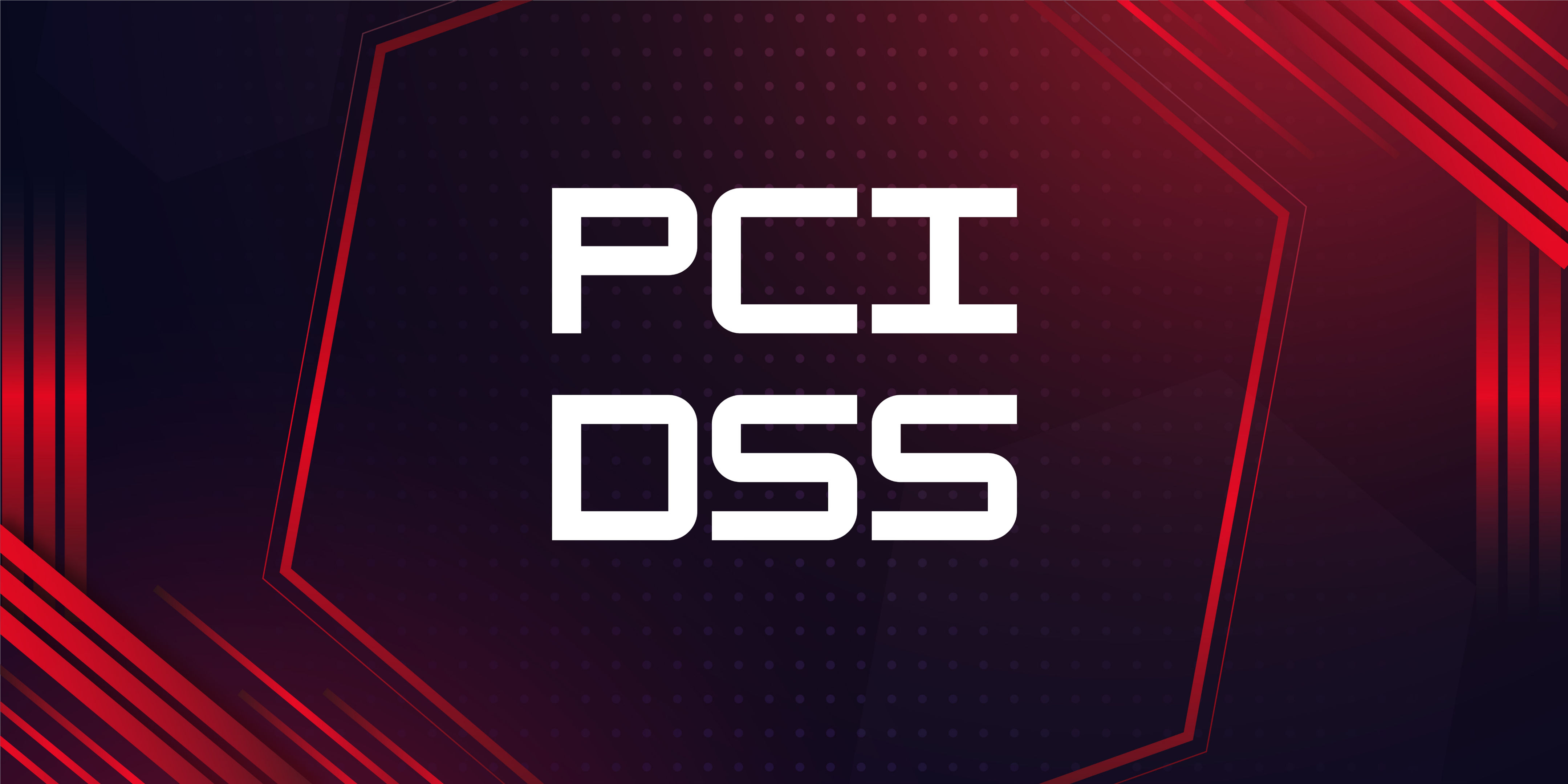 Security Updates
Security UpdatesUnderstanding the 4 Levels of PCI Compliance
Explore PCI DSS Compliance with RedZone: Key steps to protect card data and ensure secure transactions. Learn about compliance levels and tips for ...
 Security Updates
Security UpdatesWhat Is a Security Breach and How to Prevent Them
Learn how to effectively guard your business against security breaches with RedZone Technologies. Discover simple steps to keep your data safe and ...
 Security Updates
Security UpdatesUnderstanding Tailgating in Cybersecurity
Understand tailgating attacks in cybersecurity: what they are, how they work, and effective strategies for prevention to keep your business...
 Security Updates
Security UpdatesWhat is a Managed Service Provider and Its Benefits
Explore the role of Managed Service Providers (MSPs) in enhancing IT efficiency and cybersecurity for businesses, covering benefits, servi...
 Security Updates
Security UpdatesBreach Prevention: 5 Best Practices to Protect Your Data
Learn about data breaches: what they are, their impact, and how to prevent them. Explore best practices for securing your business against cyber th...






